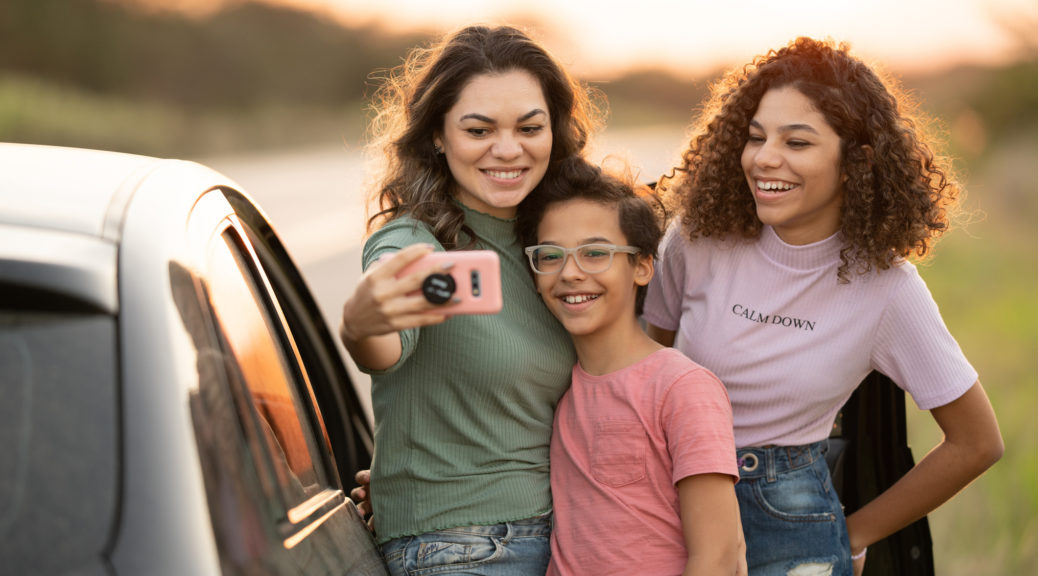Families Share Why They Love to Foster Teens

Every May, we celebrate National Foster Care Month to recognize and show appreciation for our foster families within the KVC Health Systems network. Nationwide, there are currently over 400,000 children and teens in foster care. Over half of these kids will be safely reunified with their parents or primary caregivers, nearly one-quarter will be adopted, and some will age out of foster care (at age 18 to 21 depending on the state).
Click here if you’d like to learn more about foster parenting!
There is a great need for adoptive and foster families to open their homes to youth and teens. If teens in foster care are not reunited with their birth families or adopted by a foster family or other caring family, they will age out of the system and into the adult world. Without the proper support, these youth face an uncertain future and are more likely to experience:
- Homelessness
- Poverty
- Teen pregnancy
- Incarceration
- Substance abuse
- Physical and sexual abuse
Two KVC foster and adoptive families are well aware of those outcomes among this age group and decided to take a chance on these kids. Spoiler alert: It’s been well worth it for them and for the teens.

Jonathan and Katelyn Stahl

Corey and Bobbie Friedemann
Corey and Bobbie Friedemann and Jonathan and Katelyn Stahl said “yes” to accepting teen placements a year or two into their foster care journey and haven’t looked back. Bobbie and Corey Friedemann currently have five teen girls, and Jonathan and Katelyn Stahl have two teen boys in their homes.
In between their very busy schedules, both families took time to talk about their experiences foster parenting teens, how they got started, and why they chose to work with this age group of youth.
How did you become interested in becoming foster parents?
Bobbie Friedemann was in foster care as a teen in another state many years ago. Though she was familiar with the system, she and her husband came about fostering in an unexpected way. One of their daughters approached them about helping a friend from school find a foster home and asked them to contact her friend’s case manager. Even though their daughter’s friend was placed in another foster home, the experience planted the seed for Corey and Bobbie. They decided to look into becoming foster parents. Corey and Bobbie contacted KVC to find out what they needed to do. They took the training classes, went through all the steps and became licensed five years ago.
Jonathan Stahl is an educator who teaches high school-aged special needs children. He and his wife Katelyn initially wanted to do just adoption through foster care. They had struggled to start their own family, and with Jonathan himself being an adoptee, they were all in for adoption. Toward the end of their training class, Jonathan and Katelyn decided to become licensed foster parents nearly five years ago.
What made you say yes to accepting placement of teens in foster care?
Because teens tend to be harder to place and are more likely to have experienced multiple placements, both families want their homes to be the final stop and to provide stability and a chance for these teens to thrive. Research from the Annie E. Casey Foundation shows that only 58% of teens in foster care live with a family, compared with 95% of kids 12 and under. “These are the kids no one wants,” says Katelyn, acknowledging that many foster parents feel ill-equipped to welcome teens into their homes. Bobbie agrees.
“We want the kids no one else wants because at the end of the day, the rewards outweigh the tough times,” Bobbie says. “It makes me happy to see the growth in them, too.”
The Stahls had an age group in mind when they started out. They wanted to foster boys 0-6 years of age and did so for a year – until Jonathan received a call from a fellow foster family (the Friedemanns). The ask from Corey was for Jonathan to consider taking an older child – a 13-year-old boy. The Stahls agreed to foster the teen. Since then, they’ve had a “ton of teenagers” in their home.
The Friedemanns had fostered younger children starting out. Their first placement was a sibling group – two boys and a girl. “The boys fought each other all the time,” Bobbie describes. “They would take their anger out at their birth parents and out on each other.” Bobbie and Corey worked closely with the siblings’ birth parents to help stabilize the situation.
After two years with the Friedemanns, the kids were reunified with their birth parents. The birth family has even moved into the neighborhood (a few houses down) and they all consider themselves family now.
Following that experience, Bobbie and Corey felt that they would be more effective working with teen girls. Bobbie cited her own experience as a teen in foster care. She felt that she could be more effective with this group. Her husband, Corey agrees, “She is excellent with these girls in establishing (and maintaining) communication and helping them work through their challenges.”
How many teens in foster care do you currently have in your home?
 Bobbie and Corey have five girls, ranging in age from 15-18 years. The Stahls have a 17 year old whom they are the legal guardians for, an 11- and 8-year-old whom they have adopted, and one teen in foster care, age 18.
Bobbie and Corey have five girls, ranging in age from 15-18 years. The Stahls have a 17 year old whom they are the legal guardians for, an 11- and 8-year-old whom they have adopted, and one teen in foster care, age 18.
Do you have enough space in your home?
Both families have large homes, and each child has their own room. The Stahls just purchased a larger home that gives everyone much more space. And there’s plenty of parking for everybody’s vehicles at both homes.
What are some of the challenges of fostering teens?
When the “honeymoon period” ends. Bobbie describes this as kids being on their best behavior when they first come into the home. “They present like absolute angels in the beginning,” she explains. “After a few days, we start to see the ‘real them’,” she says. “That’s when I can start to help them redirect because the façade is ripped away.”
Both families stress the importance of setting boundaries, being consistent, calm, fair and enforcing consequences for poor choices (not doing homework or chores, acting out due to anger, skipping classes, etc.).
Click here to learn more about how to work with pre-teen and teen youth.
What are the benefits of fostering teens?
For one, they are just like other kids their age. They want structure, stability and a loving home environment. Some will safely reunify with their birth families. For others who are unable to reunify, they can be adopted by their foster families or another caring family. Of the more than 5,000 children in foster care actively photo listed on AdoptUSKids.org, 42% are between the age of 15-18. Some have experienced neglect, trauma and abuse, and all need safe, loving and stable homes – and forever families.
“At the end of the day, they want someone to care about them,” says Jonathan. “Despite the resistance some may display, they want to grow up to be productive and successful adults, and the teens are very open to talking about their lives.”
“We can really have some productive conversations,” Jonathan says. “Many times, those talks occur after a meltdown or incident. We discuss what happened, why and what different choices can be made going forward.”
They are also independent. The older teens have vehicles in both homes and are able to help transport the younger kids and themselves to activities and jobs. “It helps reduce our running from one activity or meeting to the next,” Katelyn says. “The kids can all ride together.”
In the Friedemann house, the kids drive Bobbie around “like she’s a little old lady” when they go out for ice cream or shopping (a favorite pastime that is also their bonding time).
Both families delight in helping teens “grow up”. That includes driving lessons in some cases (Corey), teaching basic household chores, financial budgeting and basic life lessons to prepare them for adulthood.
 Right now, both households are in prom and graduation season. “It’s an exciting time for us and them,” adds Corey. “And our grads are looking forward to their next chapter – college.”
Right now, both households are in prom and graduation season. “It’s an exciting time for us and them,” adds Corey. “And our grads are looking forward to their next chapter – college.”
There is also the chance to build lifelong bonds with the teens and the birth families they work with closely. Bobbie enjoys an enduring bond with her foster family, and to her, they’re her parents, too, along with her birth parents. “When Corey and I got married, my birth parents were deceased,” she says. “My foster dad gave me away at our wedding,” she adds. “And my children are their grandchildren, too.”
Do you also have biological children?
The Friedmanns have four adult children and a 9-year-old son they call their “bonus round baby.” He considers the foster teens his big sisters. “He follows them around everywhere,” Bobbie laughs. “And to them, he’s their little brother and they love spending time with each other.”
The Stahls have a 3-year-old son and he loves his big brothers.
What advice would you give to families wanting to support teens in foster care?
Don’t be afraid to give foster teens a safe, stable and loving home – whether through fostering, becoming a legal guardian or adoptive parent. KVC and the fellow foster families in the network are wonderful resources to help answer your questions and support you.
“Be calm and consistent,” say the Friedemanns. “And do a lot of listening.”
“Show them love, compassion and kindness,” say the Stahls.
If you’d like to learn more about fostering a teen, KVC can help! Click on the link below to learn more today. To meet teens currently in need of a forever family, visit our adoption website here.





